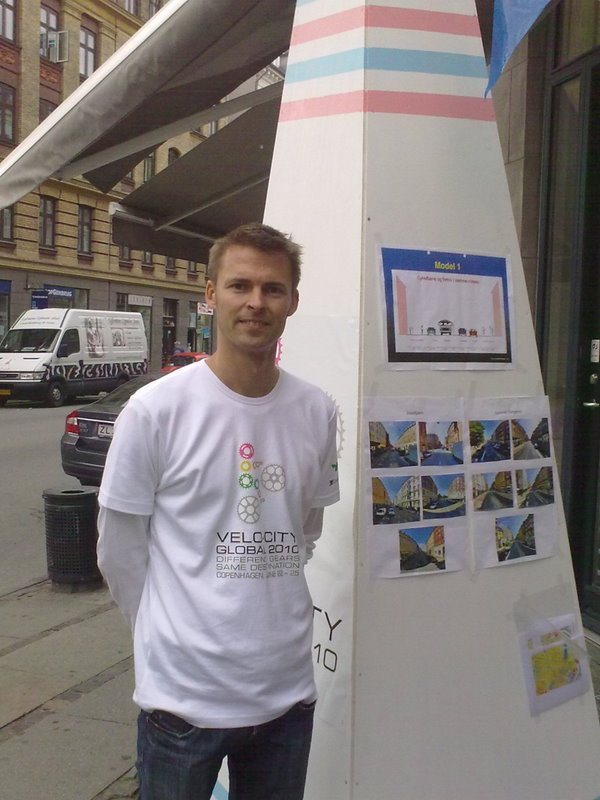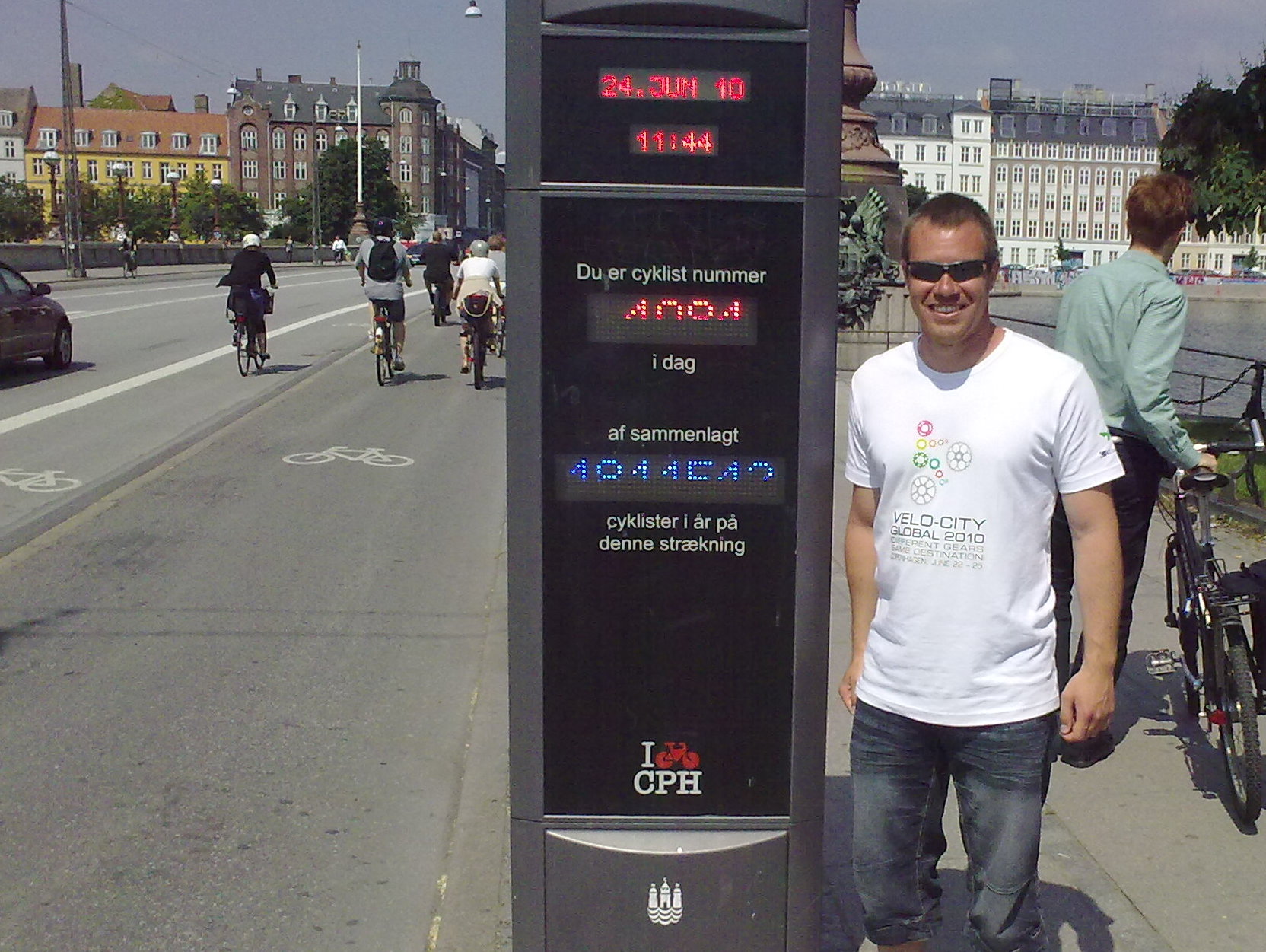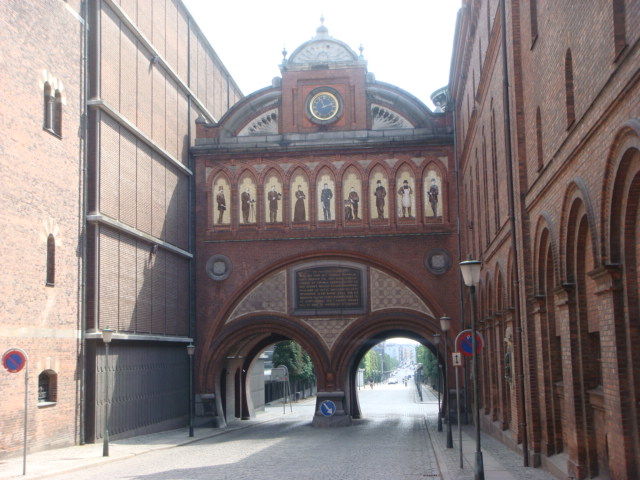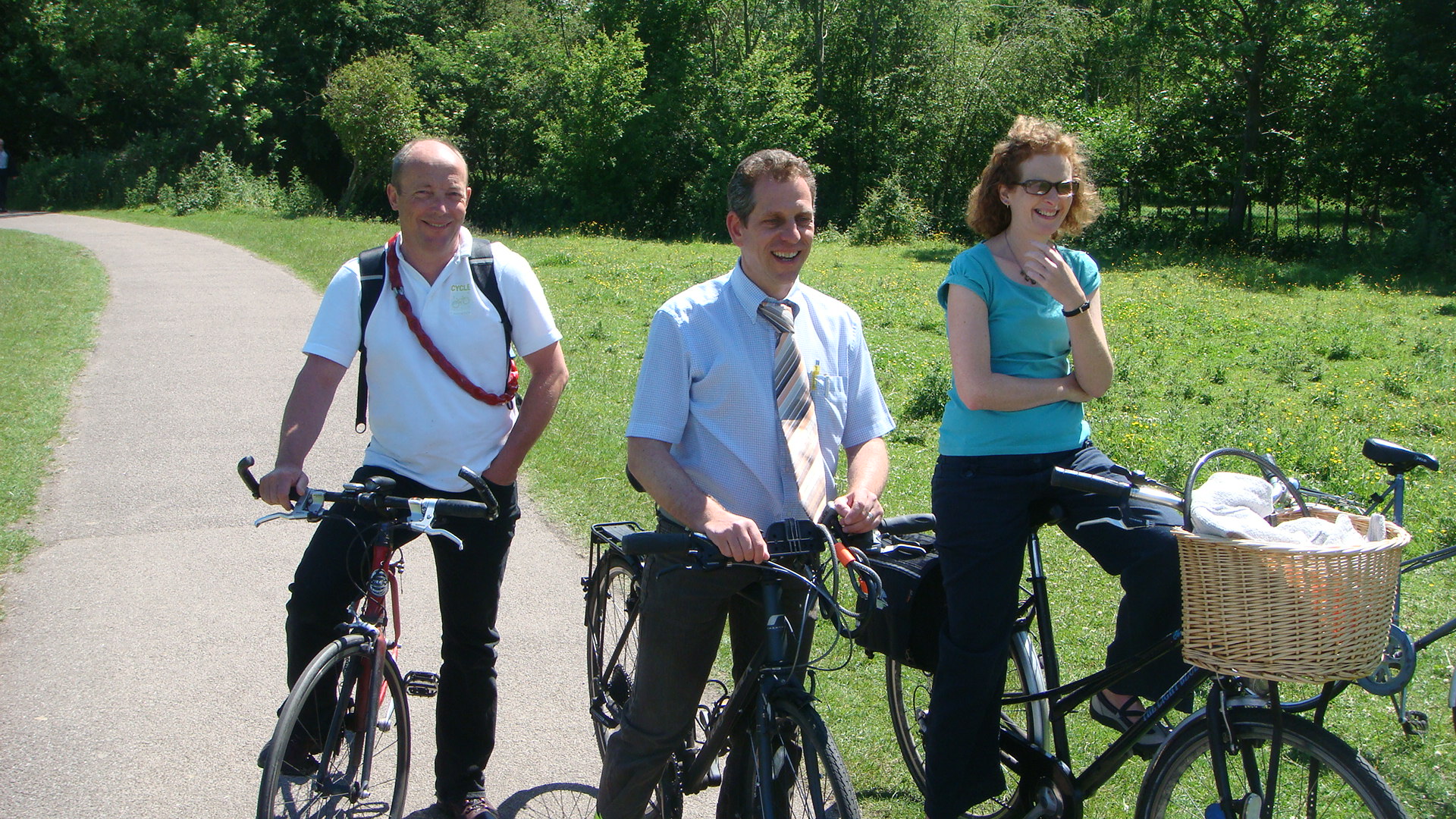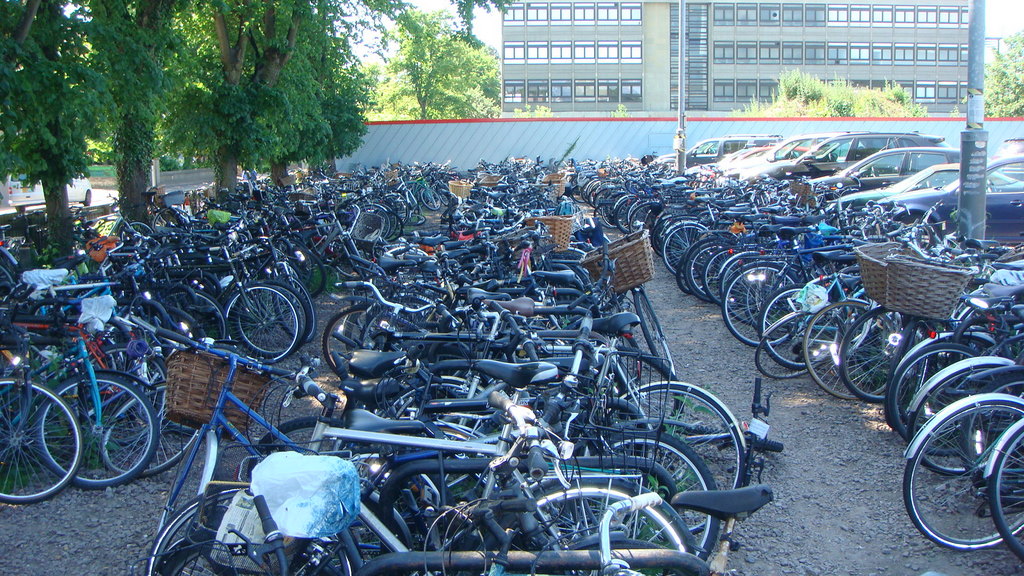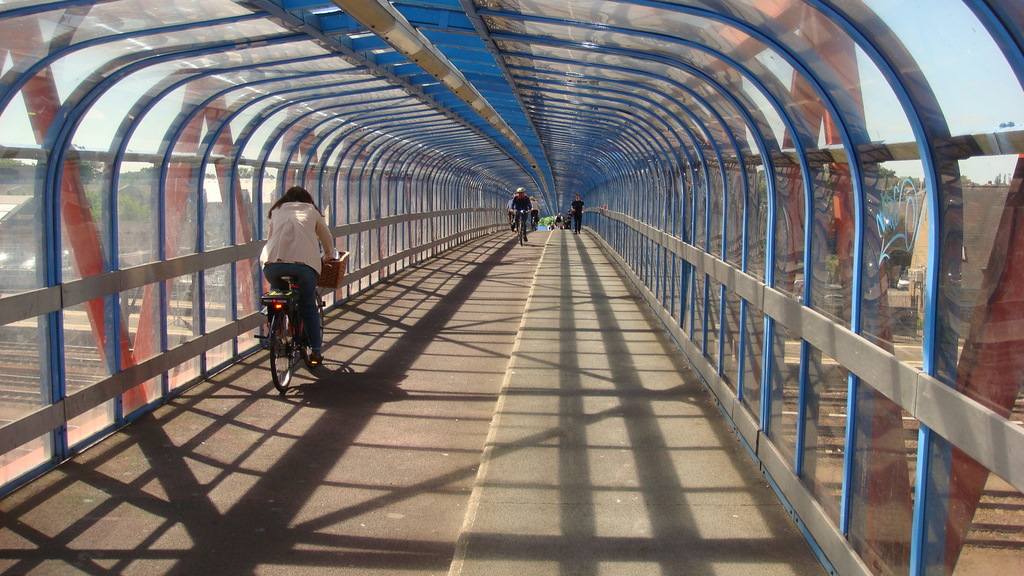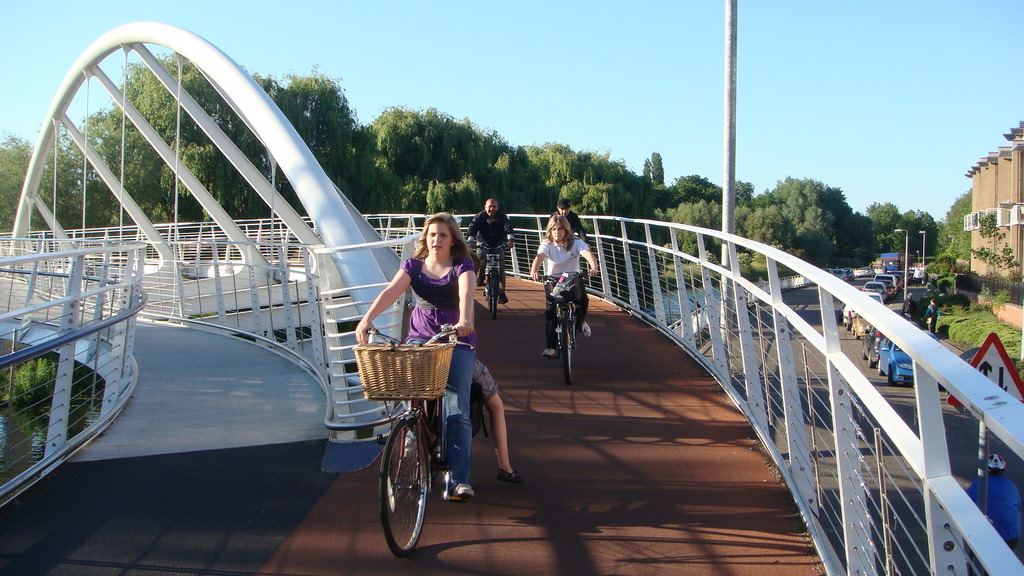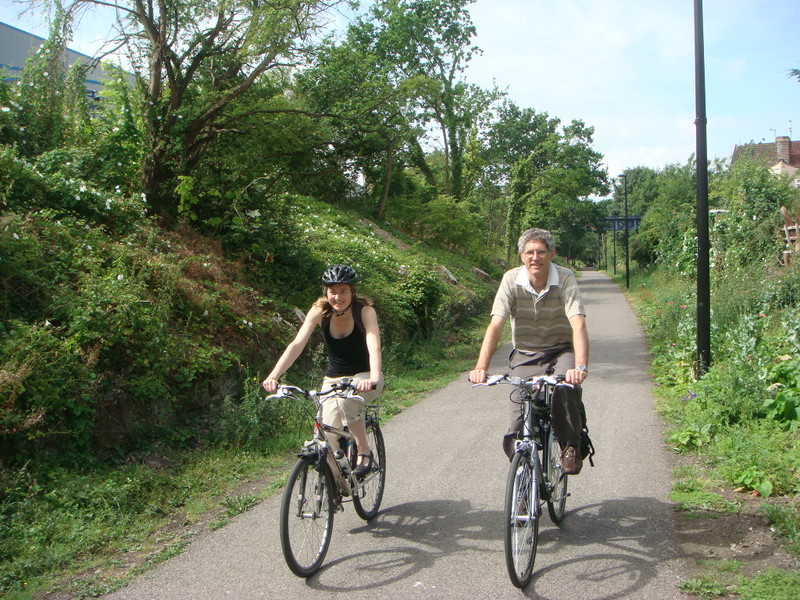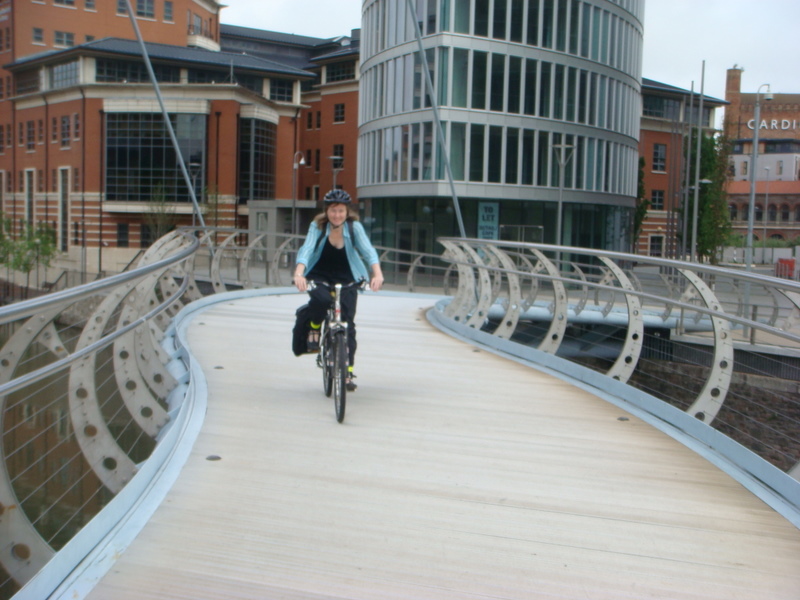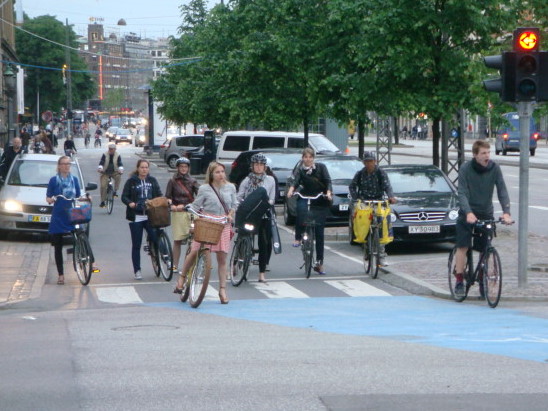Velo-city 2010 in Copenhagen
The world's largest cycling conference, Velo-City, was held in Copenhagen, Denmark from 22 to 25 June 2010. The conference was attended by ViaStrada director Andrew Macbeth, who had attended previous Velo-City conferences in 1989 (also Copenhagen) and Montreal (1992). Over 1,000 people from 60 countries attended this year. The last time ViaStrada was represented at Velo-City was in Munich, when Axel Wilke attended. Axel wrote up his lessons learned from Velo-City 2007 on our website; this has proved to be one of our most-viewed pages in the intervening years. Here's Andrew's summary of Copenhagen's Velo-City and some thoughts on his visits to Cambridge and Bristol in the UK.
Velo-City Conference - blending urban design and cycling
I was impressed with the variety of conference formats, which provided multiple learning and networking opportunities:
Plenary sessions
These were typically at the start and end of each day, where well-known keynote speakers talked to the entire conference. These included:
- Janette Sadik-Kahn (New York's transportation commissioner who has revolutionised the city's streets by converting numerous traffic lanes to wide cycle tracks separated from traffic by medians);
- Mikael Colville-Andersen (photographic chronicler of Danish cycling culture and creator of Copenhagenize cycling culture website);
- Gil Penalosa (visited New Zealand in 2008 to promote walking, cycling and urban parks); and
- Jan Gehl (legendary Danish urban designer and architect who has inspired many cities over the last 30 years to devote more road space to pedestrians and cyclists and reduce the speed and impact of motor traffic. He too has worked recently in New Zealand).
Simultaneous themed conference presentations
Here two presenters would present in one of five smaller theatres. They ranged from "mega-cities" to "greenways as catalyst to changing communities" to "developing countries" to "bikes and shopping". There were five 90-minute sessions spread over the four days for these activities.
Round tables
About 35 "round tables", where specialists in a particular area would lead discussion for up to ten or a dozen people. Topics included bicycle planning in the Middle East, bike to work campaigns in Belgium and Hungary, cycling stimulation of local shopping, Strasbourg's bicycle parking policy, Melbourne's bicycle boom and Munich's cycling marketing campaign. Both Glen Koorey and Simon Kingham, two attendees from New Zealand, presented in this format. The roundtables occurred simultaneously with the conference track sessions, so it was impossible to catch everything that was going on.
Copenhagen 1:1
|
|
As if there wasn't enough going on with the five simultaneous conference tracks and roundtables, these sessions in the programme also provided an opportunity to get out on a bike and explore Copenhagen, visiting significant cycling features. "Copenhagen one to one", which consisted of 10 locations around the city where conference attendees (and interested members of the public) could observe cycling infrastructure on the ground and talk to a designer or local expert about the feature. The locations were shown on a small map (part of the compact conference summary programme) and were easily accessible by bike (supplied free as part of conference registration). The sites and descriptions are on the conference website.
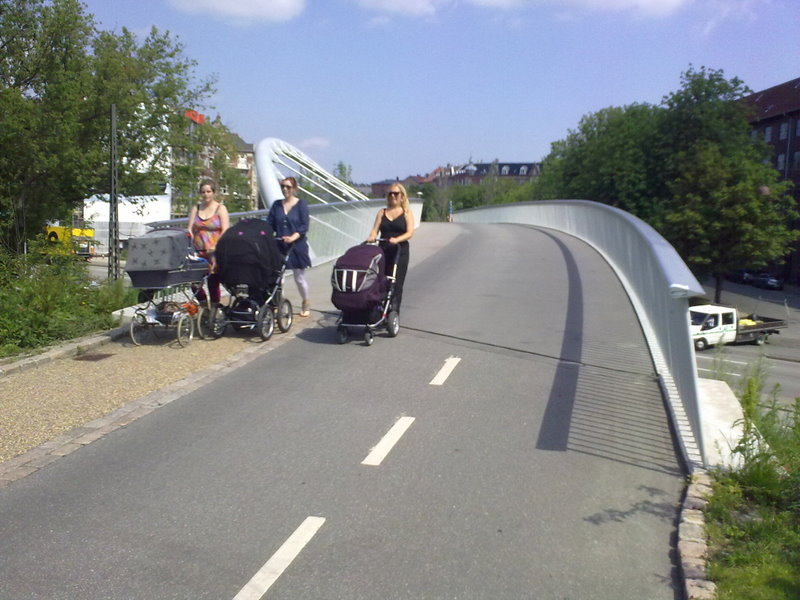
Meet the Danes
One session of the conference (90 minutes) consisted of "speed dating", where conference attendees could visit any of about 70 locals who would talk for 5 minutes on their project or initiative and answer questions from their small group audience. These sessions were arranged into five themes (e.g. infrastructure, cycling cities, research). Music played at the end of each 10 minute session and then you could join another session.
We had numerous opportunities to meet the Danes throughout the conference, and they are exceptional hosts. The Copenhageners are justifiably proud of their city. Here's one of many Copenhageners who went out of their way to share their knowledge.
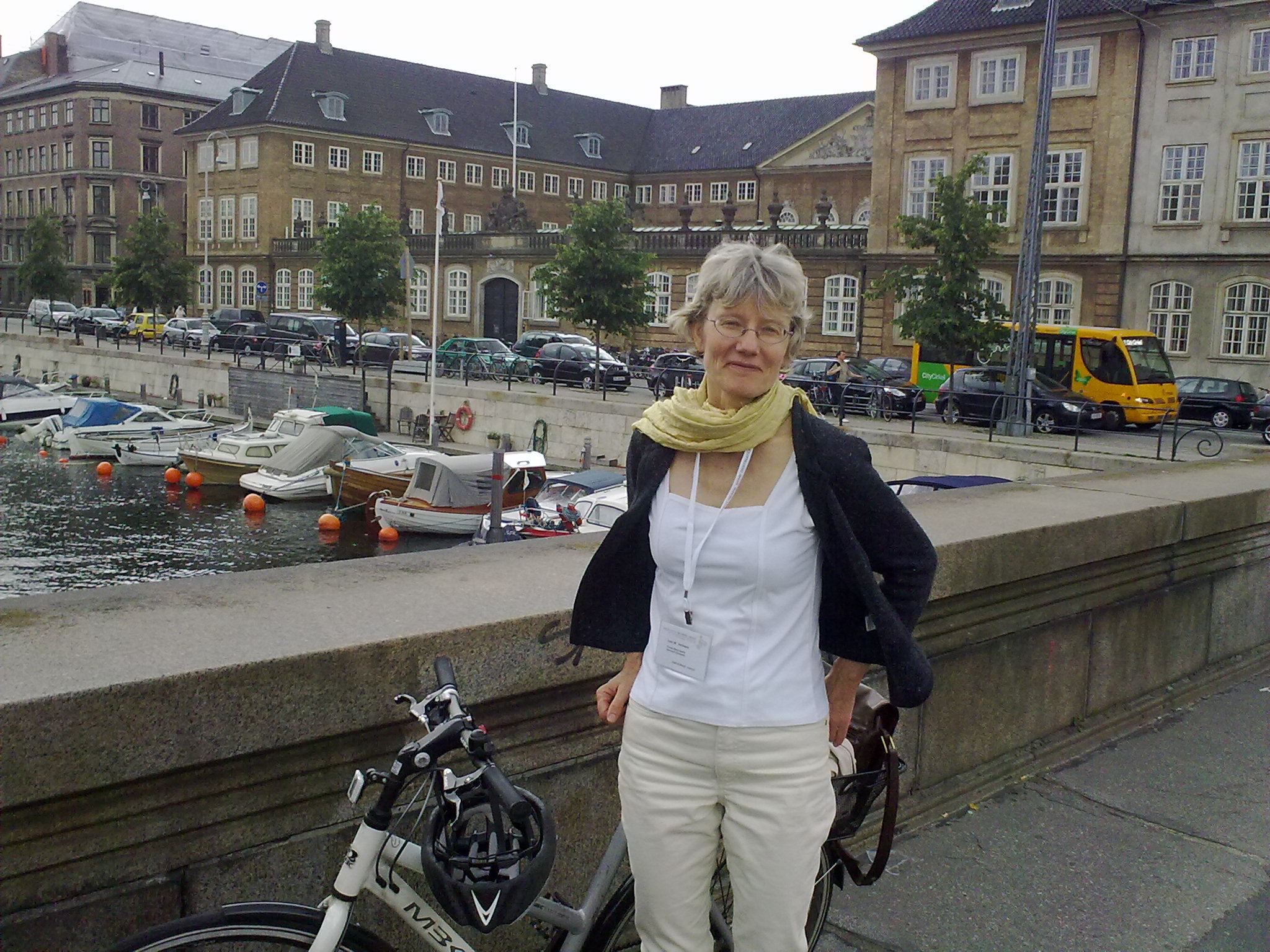
In addition, long lunch breaks (90 minutes) and morning and afternoon refreshment breaks (30 minutes) provided good opportunities for networking. Similarly, the conference dinner (Wednesday) and informal drinks (Thursday) gave participants opportunities to meet and talk.
Cycle track video
A ten-minute video has been produced by some of the Americans attending the conference and features the famous Copenhagen cycle tracks for separate cycling.
Here are some of my impressions and ideas gleaned from Copenhagen's Velo-City:
Urban Design - the making of people- and cycle-friendly cities
Copenhagen limits buildings to six stories high. This allows for reasonable urban densities to make walking, cycling and public transport viable modes. Amongst the buildings nestle urban spaces of different sizes and shapes, creating an interesting and vibrant city. And many of the more important streets are quite wide, allowing cycle tracks to be created alongside footpaths, trees, car parking and general traffic lanes. It all seems so easy!
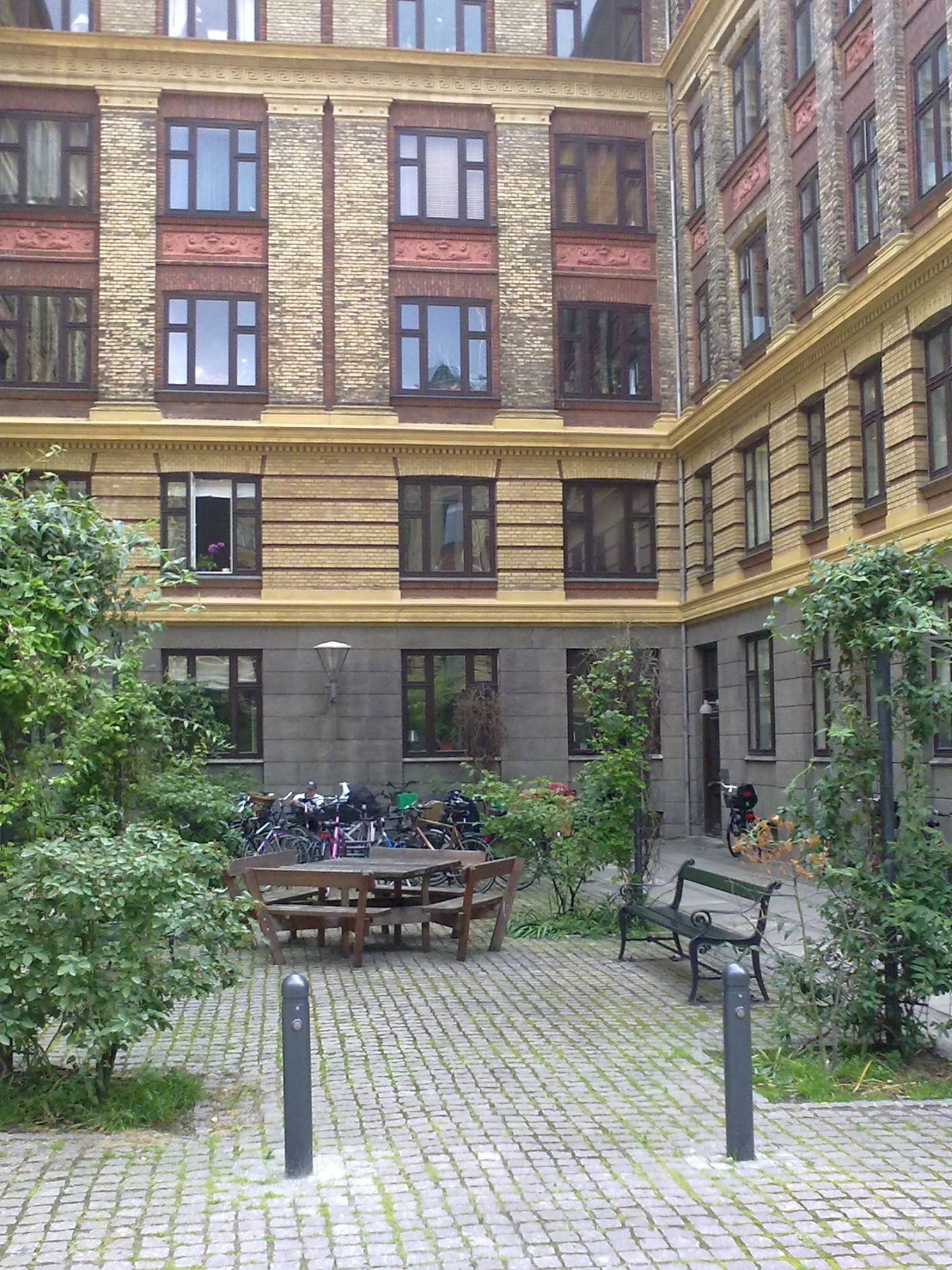
Pedestrian Streets in Leicester, UK
Leicester, a medium-sized UK city, has survived the recession better than most, partly attributable to its pedestrianisation programme of many central city streets. Associated with this, between 2004 and 2009, cycle trips increased 80%. Cycling is authorised in all pedestrian streets. By contrast, cycling is not authorised in the Stroget, Copenhagen's most famous pedestrian street - Leicester has a lesson for Copenhagen (and many other cities) here!
- Pedestrianisation is good for business; and cycling (and walking) flourish.
- Cycling is compatible with pedestrian streets
Contra-flow Cycling on One-Way Streets in Brussels, Belgium
Frederik Depoortere, Brussels Mobility, described his city's progress in promoting cycling over recent years. One successful innovation has been their treatment of one way streets. Like many old, narrow streets in European and North American cities, these have often been converted to one way streets. But in Brussels, cycling in the "wrong" direction is authorised on 90% of these, simply by use of a pavement marking arrow and a post-mounted sign at the beginning of each block. This simple solution helps make cycling more convenient and quicker than driving - it gives cycling a competitive advantage over driving. The city becomes more "permeable" for people walking and cycling, giving them quicker and more direct access when they cycle as opposed to driving.
- Allowing contra-flow cycling on narrow, slow, one-way streets is a simple and cost-effective way of increasing "permeability" for cycling relative to driving.
Copenhagen Cycle Tracks
These famous facilities have been much admired but rarely copied. Typically the cross-section (for one half of the road) consists of footpath, cycle track, parking, traffic lane (or lanes) - and this is repeated on the other side of the road. The greater separation of cyclists from motor vehicle traffic compared with conventional cycle lanes seems to encourage a wider cross-section of people to cycle. One impressive intersection carried 80,000 motor vehicles and 30,000 cycles per day, all controlled effortlessly by traffic signals.
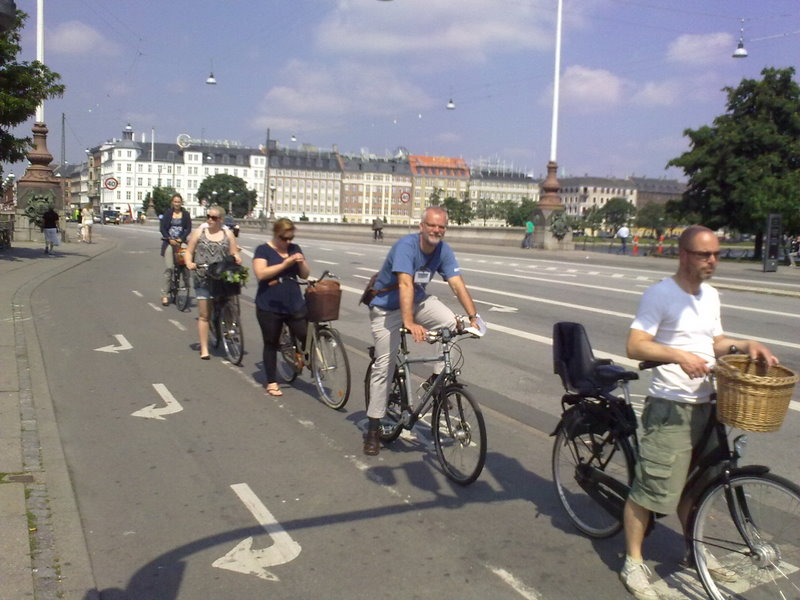
- Massive traffic flows can be accommodated at intersections using traffic signals - we don't always need flyovers!
Cycle Tourism - Zeeland and elsewhere
Cycle tourism is big business for the province of Zeeland, in the south-west of The Netherlands. Zeeland, with 380,000 inhabitants, has about the same population as Christchurch, New Zealand. The province created a special organisation, Zeeland Bike Coordination Point (ZCF), within the traffic and transport policy department to coordinate cycling infrastructure, wayfinding signs, behaviour change, road safety and all kinds of cycling including tourism.
- "Old" Zeeland may have some lessons for New Zealand, especially the New Zealand Cycle Trail and cycle tourism in this country.
Denmark, Germany, Switzerland, Japan and Taiwan were also promoting cycle tourism opportunities at the conference.
ZCF has produced a series of postcards showcasing the programme - here's a selection:
 |
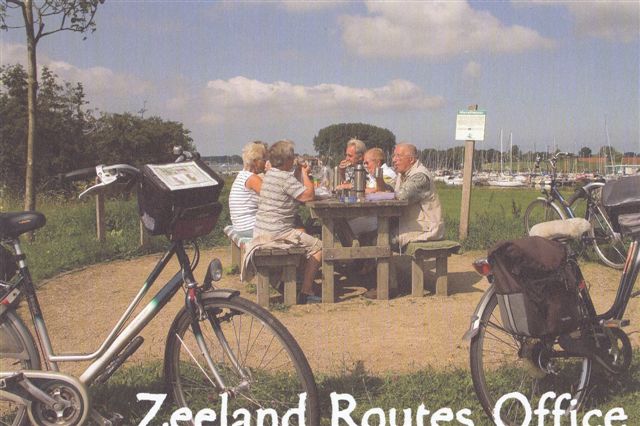 |
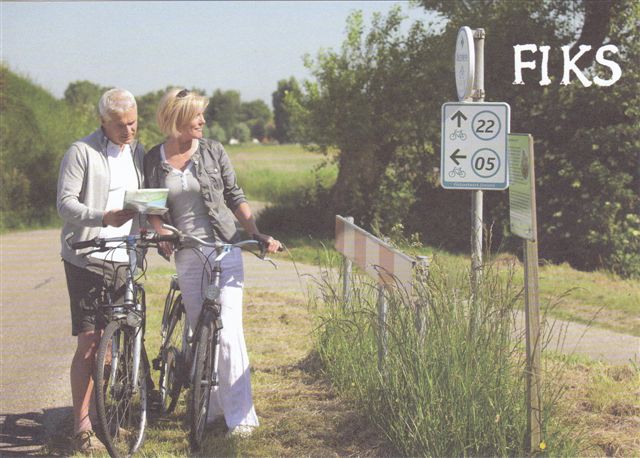 |
Brownfields redevelopment - Carlsberg brewery site
One of the locations for Copenhagen 1:1 was the Carlsberg brewery site, over 100 years old in central Copenhagen. A couple of years ago brewing on the site was discontinued (the beer is made elsewhere now), leaving a 33 ha site with a number of historic buildings. The site is being redeveloped with residential accommodation for 5,000 people and employment for 3,000. The development, which includes a relocated railway station to improve public transport accessibility, is expected to be highly energy efficient and bicycle-friendly. More details are available on the company's website.
8 - 80 Cities
This initiative from Canada promotes the idea that cities should be accessible (by foot and bike) to residents aged 8 and 80. If so, the city will be good for all people who wish to walk or cycle. We could think of 8 year olds and 80 year olds as our "design citizens". More info available on the 8-80 Cities website.
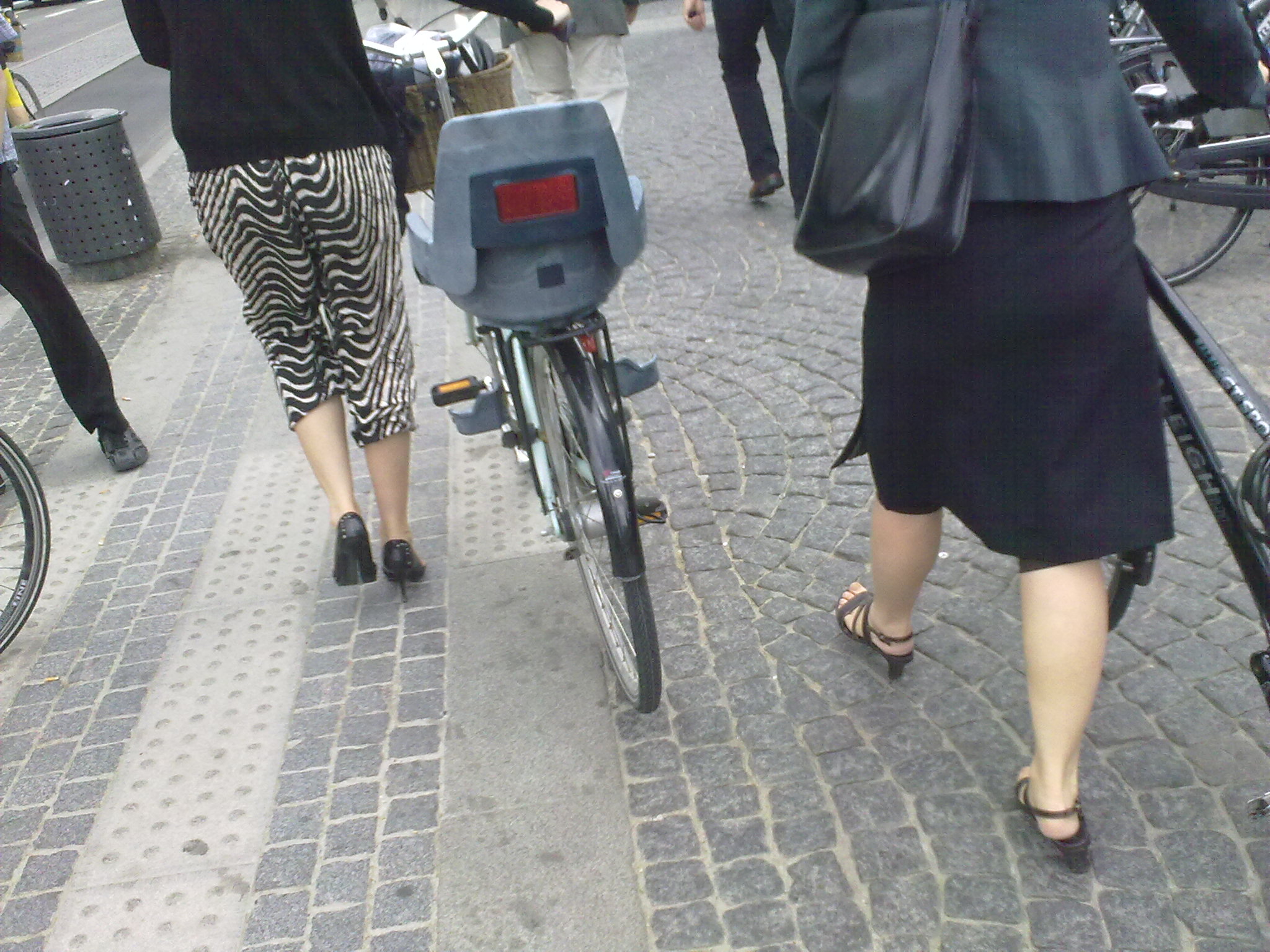
Cities for Cyclists
The purpose of this European Cyclists' Federation (ECF) initiative is "to establish a global network of cities which are working to promote bicycle use in urban areas and encourage the exchange of knowledge". More info is on the ECF website. Many New Zealand cities could benefit from membership of this network:
- Christchurch, with its long history of cycling and recent Jan Gehl-inspired push for a more liveable city;
- Hastings and New Plymouth, recently accorded Model Cycling Community status;
- Nelson, the New Zealand city with the highest mode share of trips to work by bike (7%);
- Wellington, which has recorded steady increases in cycling mode share since 1986; and
- Auckland, making progress in a hostile walking and cycling environment.
The "Cities for Cyclists" initiative was discussed in a useful plenary session on the final morning of the conference. After two speakers provided the background, we broke into small groups to discuss how cities might network together and what existing networks existed. My group was full of bright and enthusiastic people, even after four days of intense conferencing! The individual relationships created through such conferences and technical exchanges are just the best way to work! Velo-City created an ideal medium for social, business and professional exchange. Hats off to the organisers!
Other New Zealanders at the conference were:
- Michael Ferigo (Christchurch City Council)
- Glen Koorey and Simon Kingham (University of Canterbury, Christchurch)

Cambridge, UK
I spent a week in Cambridge, allowing me time to meet key cycling staff and to cycle extensively in Cambridge and surrounds. Patrick Joyce and Mike Davies (county council) and Clare Rankin (city council) all have responsibilities for cycling in the area and work well together. They also have a strong working relationship with Tricia Allen of Cycling England through the demonstration town programme (see below). The city has pedestrianised and slowed traffic on many central city streets to support walking, cycling and tourism. It is a vibrant city, apparently little affected by the global recession.
I was impressed with the cycling culture in Cambridge. They have a problem that others might want - too many bikes parked at the railway station. I visited it on Sunday morning and there wasn't a spare space to lock a bike anywhere; the place is obviously a convenient location for long-term bike storage for hundreds of residents. Perhaps they need to remove all bikes once or twice a month in a well-publicised operation.
Bristol, UK
Tricia Allen, well-known to many in Auckland transport planning circles, now works for Cycling England, coordinating its successful Cycling Demonstration Towns programme. Tricia, based in Bristol, cycled to Bath with Glen Koorey and me to give us time to review this landmark Bristol and Bath Railway Path project from 1979-86, while briefing Tricia on news from Velo-City. The economic climate in the UK is still so gloomy that Cycling England sent no-one to Velo-City for fear of being criticised as too frivolous! If three organisations in Christchurch, New Zealand can send four people to the conference, it's a shame that many other agencies could not justify attendance at the most comprehensive cycling learning opportunity on the planet!
Tricia also introduced me to John Grimshaw, founder of Sustrans 30 years ago and a mine of information about rail trails and other off-road cycle facilities. John now uses his extensive technical knowledge and extensive relationships for Cycling England's Cycling Demonstration Towns programme. He led the development of the excellent design guide for Sustrans cycle facilities, the Connect2 Greenway Design Guide, available free from the Sustrans website. This guide was an invaluable source document used by ViaStrada to develop the design guide for the New Zealand Cycle Trail.
Other commentaries on Velo-City 2010 in Copenhagen:
- Official Velo-City 2010 website
- League of American Bicyclists
- Cima Coppi (Canadian cycling clothing company)
- Momentum magazine for urban cyclists
- Planetsave environmental and climate science website
- Sustainable Cities website (Danish Architecture Centre)
Future Velo-City conferences:
- Seville, Spain, March 2011
- Vancouver, British Colombia, Canada, 2012
Conclusion
My trip to the UK and Denmark was nothing short of inspirational. Besides seeing all the great things being done for cycling (and their beneficial impacts on cities and urban design), I've met or renewed acquaintanceships with many passionate professionals doing their bit to make the world a better place, one community at a time. Thanks to all, both those mentioned in this ramble and those many others who made this trip so rewarding and enjoyable.
Footnote
Andrew subsequently delivered an illustrated presentation on his trip to two enthusiastic audiences in Nelson. About 90 people attended. Read more of this here (and download the presentation).

